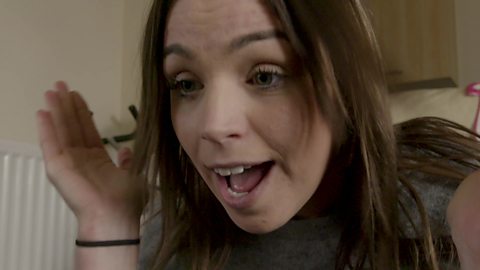
If you're thinking of running a session using some of the Tiny Happy People group activity resources, here's some advice to make the most of it.
Things to remember
When sharing the films, let the parents tell you what they think of them and how they relate to them and their child. Point out positive interactions that you see in the films.
As the parents carry out the activity with their child, remind them to let their child lead the play. ItÔÇÖs ok if their child doesnÔÇÖt want to do the activity in the way they had planned; remind them that children often donÔÇÖt play the way that we expect them to. Children will learn when we follow their play and interest rather than when we try to get them to follow our lead.
As parents and children play:
Take time to come alongside the parents and watch the play and interaction; look for positive interactions and give specific praise and feedback as you see this. Comment on the positive reactions that you see in the children.
If parents are finding it difficult, try joining the play and model it for them. Sometimes it helps to see the activity with our own child as well as seeing a video.
Things to look out for
Parents doing the activities
Look for examples of the parents doing the activity that was shown in the video. Comment on how their child enjoys the activity e.g.
'youÔÇÖre doing great at giving them the words for the things they're looking at'
'I love how you are talking to teddy; they will be learning lots of play and words while watching you'
'they are loving exploring the bricks with youÔÇŽ youÔÇÖre doing great at letting them lead the play'

Face-to-face interaction
When the parents are in a face-to-face position this helps their child to see all of their communication attempts and pay better attention. Look to encourage this e.g.:
'when you are sitting with them like that she can see you and the toy: itÔÇÖs lovely how sheÔÇÖs smiling and chatting to you as well as looking at the toy'
'itÔÇÖs great that you are down on the floor like that; you can see them looking back at you as they're exploring the toys and you can talk about what they're interested in'

Pausing and waiting
Pausing and waiting helps parents to see what their child is interested in and then follow their lead. It lets their child take a turn in interaction too. Look out for this and comment:
- 'when you waited and watched them you saw they were looking at the duck and could tell them the name'
- 'when you paused then, they were chatting back to you. When they make those noises thatÔÇÖs them taking their turn'
Remember
DonÔÇÖt give too much information all at once: change takes time and needs practice. ItÔÇÖs better to give a little information, give parents time to think about it and repeat the messages often.

Interesting voices and noises
When a parent uses an interesting voice and words and noises such as 'uh-oh', 'wow' and animal sounds, it really helps to engage their childÔÇÖs attention. You could comment on this:
- 'when you said 'bang!', they looked at you, giggled and banged the pan againÔÇŽ I wonder if they'll try it again if you say it again?'

Copying and adding to actions and sounds
When parents copy childrenÔÇÖs actions, sounds and words it shows their child that they are listening and responding. When they add words to this it helps their child to learn the words that relate to what they're taking an interested in. You could say something like:
- 'Did you notice how they pointed to the teddyÔÇÖs nose again when you copied them and said ÔÇśnoseÔÇÖ. When you copy them, they're listening to you and copying you too'



